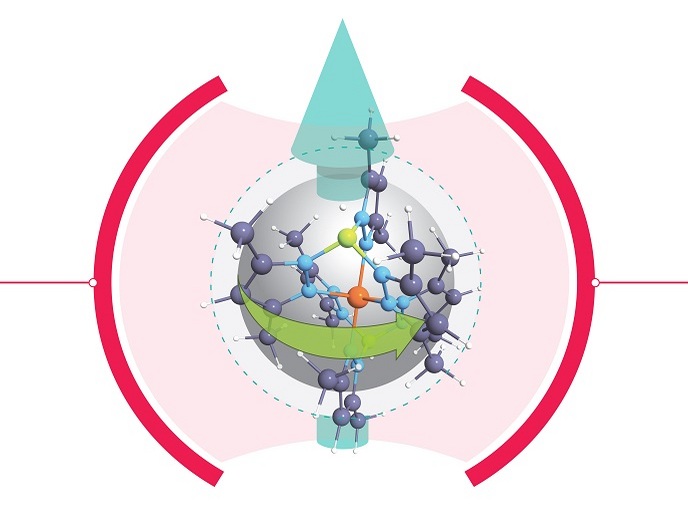Molecular spintronics advances herald a new era in spin current devices
The discovery nearly 30 years ago of giant magnetoresistance(opens in new window) was a monumental advance garnering the 2007 Nobel Prize in Physics. Since then, very rapid developments in the ability to harness both the charge and spin of electrons has led to a plethora of spintronics devices. More recently, the use of organic molecules rather than conventional all-inorganic heterostructures opened the door to a virtually limitless array of unique properties and functions. Given the mind-boggling material combinations possibilities, enhanced fundamental understanding and tools for rational molecular design are a priority. The EU’s Future and Emerging Technologies programme funded the work of the COSMICS(opens in new window) project to address this need and foster radically new technology innovation.
Spin-crossover complexes on inorganic substrates
Spin crossover (SCO) complexes are molecules that can exist in both low and high magnetic state. Project coordinator Cyrille Barreteau of the French Alternative Energies and Atomic Energy Commission(opens in new window) explains: “SCO complexes can be switched from low spin (or low magnetism) to high spin via the application of an external stimulus such as light, temperature, voltage or pressure. The magnetic transition is accompanied by a change in other properties such as volume, optical characteristics and conductivity. This switching also gives scientists a ‘knob’ to tune other properties when the SCO is in contact with a substrate.” Although the crystal structures of SCO complexes have long been known, it’s been a challenge to deposit these molecules on substrates, let alone maintain their intrinsic ‘switchability’. This means the properties of SCO complexes on substrates have largely remained a mystery.
Pioneering insight into SCO complex properties
COSMICS brought together a unique multidisciplinary consortium that developed advanced modelling techniques supported by groundbreaking experimentation in the nascent field of molecular spintronics. “The very powerful molecular builder developed during COSMICS is an invaluable tool for researchers. User-friendly analysis tools make difficult calculations much easier. Finally, very efficient implementation enables large-scale systems’ simulation at a moderate computational cost,” observes Barreteau. COSMICS used their modelling tools to simulate the most robust SCO complexes and propose new systems that could open attractive routes for the design of molecular spintronics device. The team’s successful deposition of the robust SCO complexes provided a unique window on the behaviours of these promising enigmatic molecules. Insight from experiments informed models and vice versa, a winning combination that led to a deep understanding of the role of intermolecular and molecule-substrate interaction on the switching mechanism of SCO complexes.
A star is born … and a legacy remains
Barreteau notes: “Unexpectedly, in one of our SCO complexes we discovered that the volume change of the molecular layers that occurs upon switching could induce significant changes in the substrate’s electronic properties. We integrated the SCO complex in an SCO/graphene horizontal device concept, leading to demonstration of unprecedented electron transport in a graphene sheet”. The transport can be tuned via light and/or temperature using the spin transition of the SCO complex over-layer. These results will be used to prepare the first light-addressable spin current devices based on SCO complexes. “The modelling tools developed during COSMICS fostered the development of successful new ways to incorporate magnetic molecules in electronic devices based on spin manipulation at the single-molecule scale. They will be essential to the design of new devices,” concludes Barreteau. Expect rapidly accelerating innovation in the emerging field of molecular spintronics, thanks to this project’s outcomes.







